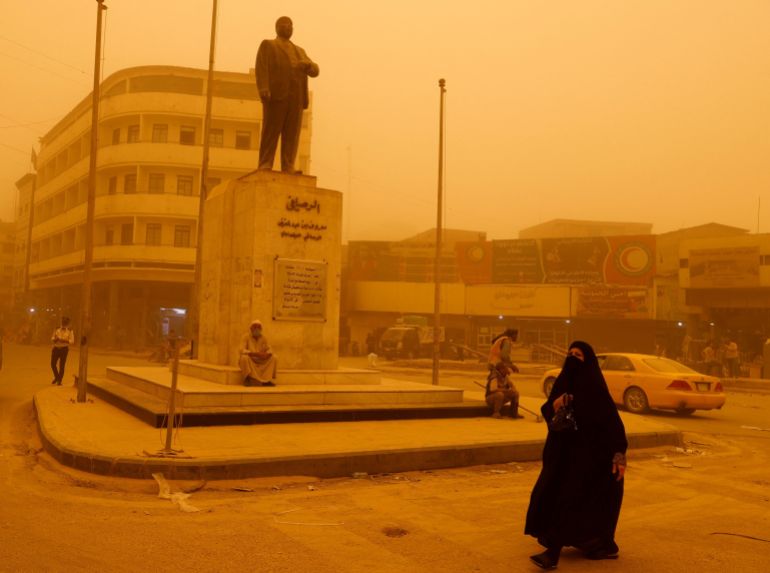[ad_1]
Medical officials say hundreds of Iraqis in Baghdad and other cities went to hospitals with breathing difficulties.
The latest heavy sandstorm to hit Iraq has forced some schools and offices to close, while flights at Baghdad Airport have also been suspended.
The education ministry and other offices declared Monday a day off for local government institutions, with the exception of health services. According to medical officials, hundreds of people across Baghdad and southern cities went to hospitals with breathing difficulties.
Baghdad International Airport said in a statement that it was closing its airspace and halting all flights until further notice because of low visibility. The state-run INA news agency reported that airports in Najaf and Sulaimaniyah were also closed for the day.
It is the eighth dust storm since mid-April to hit Iraq, which has been battered by soil degradation, intense droughts and low rainfall linked to climate change.

The last one earlier this month led to the death of one person while 5,000 others had to be hospitalised for respiratory problems.
“It’s every three or four days now,” said taxi driver Ahmed Zaman, 23. “It’s clearly a result of climate change and lack of rain, whenever there’s wind it just kicks up dust and sand.”
In Baghdad and southern Iraqi cities, a red haze of dust and sand reduced visibility to just a few hundred feet.

“We’ve had 75 cases of people with respiratory problems,” said Ihsan Mawlood, an accident and emergency doctor in a Baghdad hospital. “We’re treating patients with oxygen machines if necessary.”
Authorities in seven of Iraq’s 18 provinces, including Baghdad, ordered government offices shut. Iraq is the fifth-most vulnerable country in the world to the climate crisis, according to the United Nations.
Iraq is prone to seasonal sandstorms but experts and officials are raising the alarm over their frequency in recent years, which they say is exacerbated by record-low rainfall, desertification and climate change.
The World Bank has warned that Iraq could potentially suffer a 20 percent drop in water resources by 2050.





